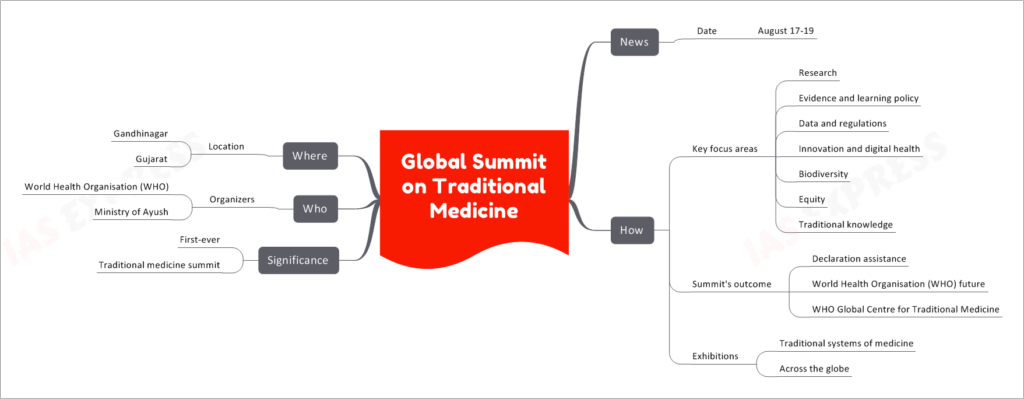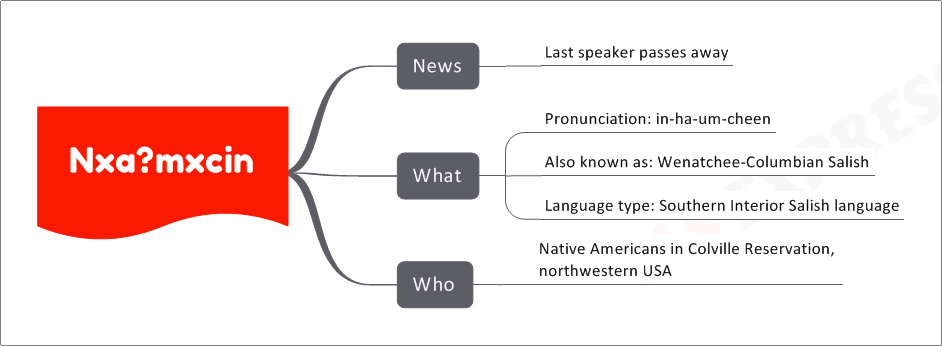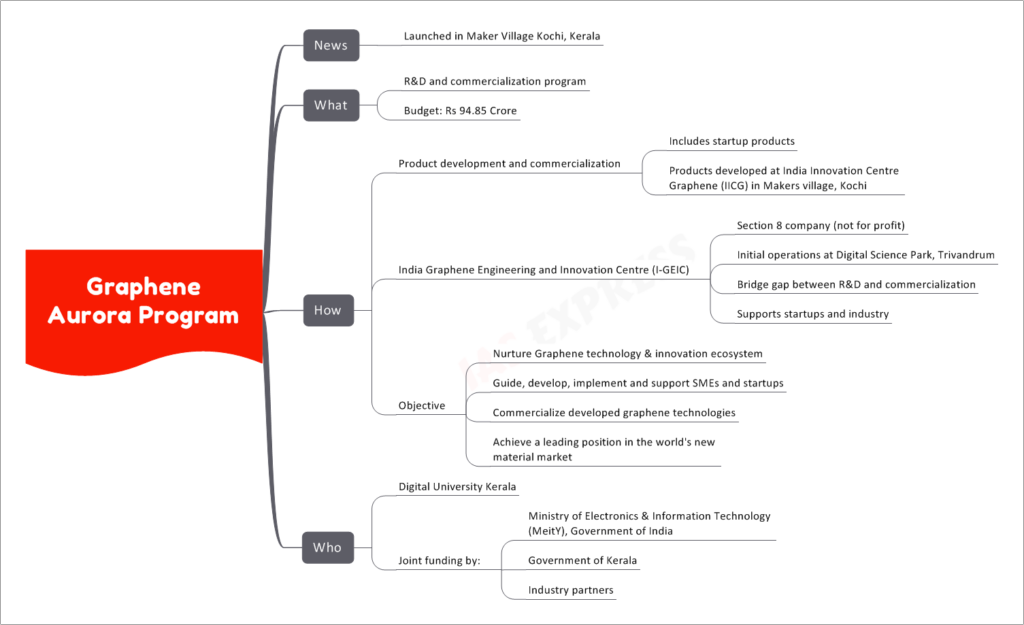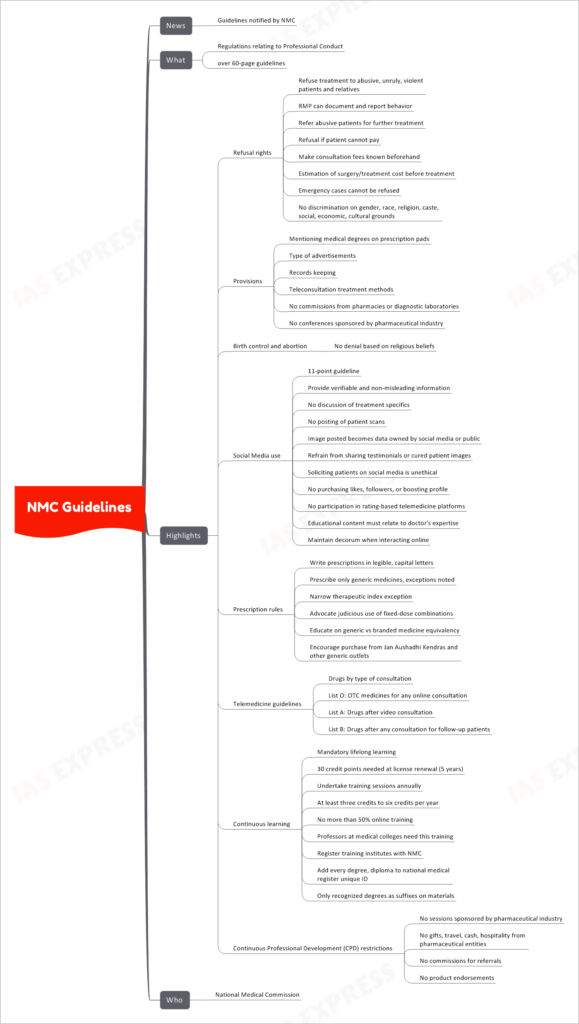[Newsbits] 14.08.2023

Global summit on traditional medicine
In recent news, a significant event is set to take place from August 17th to 19th - the Global Summit on Traditional Medicine. This summit aims to address the critical role of traditional medicine in modern healthcare, exploring various aspects that impact its integration and development.
Key Focus Areas
Research and Evidence
- Exploring the scientific basis of traditional medicine.
- Highlighting research advancements in traditional healing practices.
- Bridging the gap between traditional and modern medical research.
Learning Policy and Data Regulations
- Developing policies for the education and training of traditional medicine practitioners.
- Establishing regulatory frameworks to ensure safety and efficacy.
- Integrating traditional medicine into national healthcare systems.
Innovation and Digital Health
- Discussing the role of technology in preserving and disseminating traditional medical knowledge.
- Exploring innovative approaches for diagnosis and treatment.
- Integrating traditional medicine with digital health platforms.
Biodiversity and Equity
- Recognizing the connection between biodiversity and traditional medicine.
- Addressing concerns about over-harvesting of medicinal plants.
- Promoting equitable access to traditional healthcare resources.
Traditional Knowledge Preservation
- Discussing the importance of preserving traditional medical knowledge.
- Exploring ways to pass down this knowledge to future generations.
- Recognizing the value of indigenous wisdom in healthcare.
Summit's Outcomes
Declaration and Assistance
- Crafting a declaration to reinforce the importance of traditional medicine.
- Seeking international cooperation for its advancement.
- Promoting collaborative efforts to integrate traditional and modern healthcare systems.
Future of the World Health Organisation (WHO)
- Shaping the future direction of WHO's involvement in traditional medicine.
- Discussing potential policy changes and initiatives.
WHO Global Centre for Traditional Medicine
- Establishing a dedicated global center within WHO to promote traditional medicine research, education, and policy.
- Enhancing collaboration between countries and organizations in this field.
Exhibitions
Showcasing Traditional Systems of Medicine
- Featuring exhibitions of diverse traditional healing systems from around the world.
- Highlighting the cultural richness and effectiveness of these practices.
Cross-Global Representation
- Presenting traditional medicine practices from different countries and regions.
- Promoting cross-cultural exchange and learning.
Significance of the Summit
First-Ever Traditional Medicine Summit
- This event marks the inaugural global summit focused solely on traditional medicine.
- It showcases the growing recognition of traditional healing methods in modern healthcare.
Organizers
World Health Organisation (WHO)
- Co-hosting and coordinating the summit.
- Demonstrating WHO's commitment to bridging traditional and modern medicine.
Ministry of Ayush
- Collaborating with WHO to organize the event.
- Showcasing India's commitment to traditional healthcare practices.
Location
Gandhinagar, Gujarat
- The summit will take place in Gandhinagar, a city in the state of Gujarat, India.
- This location holds cultural significance and aligns with India's rich tradition of herbal medicine.
n̓xaʔm̓xčín̓
The recent news of the passing of the last speaker of n̓xaʔm̓xčín̓ marks the end of an era for this unique and culturally rich language. Also known as Wenatchee-Columbian Salish, n̓xaʔm̓xčín̓ was a Southern Interior Salish language spoken by Native Americans in the Colville Reservation of northwestern USA.
Unraveling n̓xaʔm̓xčín̓
Pronunciation: in-ha-um-cheen
Language Type: Southern Interior Salish
n̓xaʔm̓xčín̓, pronounced as "in-ha-um-cheen," was a linguistic treasure that held profound cultural significance for the Native American community in the Colville Reservation. This language, a member of the Southern Interior Salish language group, served as a vital bridge connecting generations, preserving ancestral wisdom, stories, and traditions.
The Last Breath of a Language
With the passing of the last speaker, n̓xaʔm̓xčín̓ faces the stark reality of extinction. The silence that now engulfs the language echoes the loss of an intricate web of communication, a unique worldview, and a connection to the past. As the last vestiges of n̓xaʔm̓xčín̓ fade away, the urgency of preserving endangered languages comes into sharp focus.
A Cultural Tapestry
The essence of n̓xaʔm̓xčín̓ extended beyond mere words; it encapsulated the identity, heritage, and traditions of the Native American communities it belonged to. This language served as a repository of stories, beliefs, and knowledge handed down through generations. Its loss reverberates not only linguistically but culturally, eroding the intricate tapestry of the community's history.
The Legacy Carriers
The native speakers of n̓xaʔm̓xčín̓, the individuals who were its living vessels, held the key to unlocking a treasure trove of cultural nuances. Their ability to convey emotions, values, and nuances unique to the language was an irreplaceable gift. With their departure, the language's legacy now lies in the hands of scholars, preservationists, and technology.
Preserving for Posterity
While the last speaker of n̓xaʔm̓xčín̓ may have passed, the imperative to preserve the language for future generations remains resolute. Documenting and archiving the remnants of n̓xaʔm̓xčín̓ through recordings, transcriptions, and research becomes paramount. These efforts, while unable to resurrect the spoken language, can ensure that its memory endures.
A-HELP Program
The A-HELP (Accredited Agent for Health and Extension of Livestock Production) program has taken root in Gujarat, ushering in a transformative era for animal husbandry. This initiative is a vital component of the Pashudhan Jagrati Abhiyaan, a movement dedicated to enhancing livestock welfare and uplifting women through comprehensive training and support.
Unveiling the A-HELP Program
The A-HELP program serves as an Accredited Agent for Health and Extension of Livestock Production, designed to foster better livestock management practices. Integral to the broader Pashudhan Jagrati Abhiyaan, this initiative has a special focus on empowering women by enlisting them as trained agents in the field of animal husbandry. The program encompasses various facets aimed at enhancing livestock welfare:
- Disease Control: Trained agents play a pivotal role in controlling and preventing diseases among livestock, ensuring healthier animals and increased productivity.
- Artificial Insemination: Agents are entrusted with the task of conducting artificial insemination under the Rashtriya Gokul Mission (RGM), contributing to improved breeding practices.
- Animal Tagging: Proper tagging of animals facilitates better tracking, monitoring, and management of livestock.
- Livestock Insurance: The program also incorporates livestock insurance, safeguarding the interests of livestock owners against unexpected losses.
Execution Strategies
The implementation of the A-HELP program involves strategic collaboration and rigorous training:
Role of State Veterinary Universities
- Coordination: State Veterinary Universities collaborate closely with the State Animal Husbandry Departments to ensure seamless execution of the program.
- Awareness and Training: Workshops, awareness camps, and seminars are conducted to disseminate essential knowledge on various aspects, including disease control, livestock nutrition, and medical interventions.
- Practical Training: The program provides practical training to students, equipping them with scientific techniques for effective livestock management.
- Engagement Targets: The A-HELP program sets a goal of engaging at least 250 farmers and proprietors, cascading its benefits to a wider audience.
- Focus Areas: The program centers its efforts on improving reproductive health and overall productivity of livestock.
Collaboration with Indian Immunological Ltd
- Nutritional Support: The collaboration with Indian Immunological Ltd ensures the provision of essential nutritional supplements for livestock.
- Mineral Mixtures: Livestock receive crucial mineral mixtures to address deficiencies and boost their well-being.
- Dewormers and Medicines: The program facilitates the availability of dewormers and medicines, contributing to the health and vitality of animals.
The Driving Force
The A-HELP program operates under the Department of Animal Husbandry and Dairying, reflecting the government's dedication to advancing animal welfare and uplifting rural communities. This initiative aligns with the broader goals of promoting sustainable agriculture, economic empowerment, and the overall well-being of livestock.
Graphene Aurora Program
The Graphene-Aurora program has made a dynamic entry onto the technological stage, launching at the Maker Village in Kochi, Kerala. This program signifies a concerted effort towards Research and Development (R&D) and commercialization, aiming to transform innovative ideas into tangible realities. With a budget of Rs 94.85 Crore, the program is set to revolutionize the realm of new materials and technology.
R&D and Commercialization at the Core
The heart of the Graphene-Aurora program lies in its commitment to both research and commercialization. The program encapsulates the entire journey from conceptualization to product realization:
Product Development and Commercialization
- The program encompasses a diverse range of product development, spanning from nascent startups to established ventures.
- A special emphasis is placed on products emerging from the India Innovation Centre Graphene (IICG) within the Maker Village, Kochi.
India Graphene Engineering and Innovation Centre (I-GEIC)
- The program establishes the India Graphene Engineering and Innovation Centre as a Section 8 company, driven by a not-for-profit ethos.
- The initial operations are stationed at the Digital Science Park in Trivandrum.
- The center functions as a bridge between the world of research and the realm of commercialization, catering to both startups and industries.
Mission and Vision
The Graphene-Aurora program is fueled by a vision to cultivate a robust ecosystem of graphene technology and innovation. The program's core objectives encompass the following:
- Nurturing Innovation: The program seeks to foster the growth of graphene technology and innovation within India, nurturing a landscape where new ideas can flourish.
- Guidance and Development: It aims to guide, develop, implement, and provide support to Small and Medium-sized Enterprises (SMEs) and startups, paving their way to success.
- Commercialization of Technologies: One of the central goals is to commercialize the groundbreaking technologies developed through the program, bringing them to the market and society at large.
- Global Leadership: The program has its sights set on achieving a preeminent position in the global new materials market, placing India at the forefront of innovative technology.
Collaborative Forces
The Graphene-Aurora program is a result of collaborative efforts between multiple stakeholders, including:
- Digital University Kerala: The program is initiated under the aegis of Digital University Kerala, a leading educational institution.
- Joint Funding: The funding for the program is a collaborative endeavor, with contributions from:
- Ministry of Electronics & Information Technology (MeitY), Government of India: The central government plays a significant role in supporting this technological advancement.
- Government of Kerala: The state government of Kerala has also extended its support, emphasizing the importance of innovation in the region.
- Industry Partners: Industry players are actively engaged in funding and supporting the program, recognizing its potential for groundbreaking advancements.
National Medical Commission Guidelines
In recent news, the National Medical Commission (NMC) has taken a significant step to uphold ethical and professional standards in the medical field. The NMC has notified a comprehensive set of guidelines that address various aspects of medical practice, aiming to ensure patient welfare, transparency, and accountability.
Guidelines Notified by NMC
The guidelines laid out by the National Medical Commission encompass a wide range of regulations aimed at promoting professional conduct and ethical behavior within the medical community. Spanning over 60 pages, these guidelines cover diverse areas of medical practice and patient care.
Regulations Relating to Professional Conduct
The NMC guidelines touch upon various essential aspects of medical practice, including:
Refusal Rights
- Refusing Treatment: Healthcare professionals have the right to refuse treatment to patients and their relatives if their behavior is abusive, unruly, or violent.
- Documentation and Reporting: Registered Medical Practitioners (RMPs) are empowered to document and report such behavior for appropriate actions.
- Referral for Further Treatment: In cases of abusive behavior, patients can be referred for further treatment to address their behavior.
- Financial Considerations: Refusal of treatment is allowed if a patient is unable to pay for the medical services.
- Transparency in Fees: Doctors are required to make consultation fees known to patients before treatment.
- Cost Estimation: The cost of surgeries or treatments should be estimated before the commencement of the procedure.
- Emergency Cases: Emergency cases cannot be refused treatment.
- Non-Discrimination: Healthcare providers must not discriminate against patients based on gender, race, religion, caste, social, economic, or cultural grounds.
Provisions
- Prescription: Medical degrees should be mentioned on prescription pads for clarity and credibility.
- Advertisements: Guidelines on the type of advertisements that medical professionals can engage in.
- Records Keeping: Proper maintenance of patient records and medical documentation.
- Teleconsultation Methods: Regulations for conducting teleconsultations and providing remote medical care.
- Avoiding Commissions: Doctors are prohibited from receiving commissions from pharmacies or diagnostic laboratories.
- Sponsored Conferences: Medical professionals cannot participate in conferences sponsored by the pharmaceutical industry.
Birth Control and Abortion
- Religious Beliefs: Medical practitioners are not allowed to deny birth control or abortion services based on their religious beliefs.
Social Media Use
- Guidelines: An 11-point guideline for medical professionals' social media presence.
- Verifiable Information: Provide accurate and verifiable information on social media platforms.
- Treatment Discussion: Avoid discussing specific treatment details on public platforms.
- Patient Scans: Do not share patient scans or images on social media.
- Ownership of Images: Images posted on social media may become public or owned by the platform.
- Testimonials: Refrain from sharing patient testimonials or images of cured patients.
- Solicitation: Soliciting patients on social media is considered unethical.
- No Artificial Boosting: Purchasing likes, followers, or boosting profiles is prohibited.
- No Rating Platforms: Avoid participating in rating-based telemedicine platforms.
- Educational Content: Share educational content relevant to the doctor's expertise.
- Online Decorum: Maintain professionalism and decorum when interacting online.
Prescription Rules
- Legible Prescriptions: Prescriptions should be written in legible, capital letters.
- Generic Medicines: Doctors should primarily prescribe generic medicines, with exceptions noted.
- Therapeutic Index: Narrow therapeutic index exceptions apply.
- Fixed-Dose Combinations: Advocacy for judicious use of fixed-dose combinations.
- Medicine Equivalency: Educate patients on the equivalence of generic and branded medicines.
- Jan Aushadhi Kendras: Encourage patients to purchase medicines from Jan Aushadhi Kendras and other generic outlets.
Telemedicine Guidelines
- Drug Classification: Guidelines for prescribing drugs based on the type of consultation:
- List O: Over-the-counter medicines for any online consultation.
- List A: Drugs after video consultation.
- List B: Drugs after any consultation for follow-up patients.
Continuous Learning
- Mandatory Lifelong Learning: Doctors are required to engage in continuous learning throughout their careers.
- Credit Points: Accumulate 30 credit points for license renewal every 5 years.
- Annual Training: Attend training sessions annually.
- Training Credits: Attend a minimum of three to six credits per year.
- Online Training Limit: No more than 50% of credits can be earned through online training.
- Training for Professors: Professors at medical colleges must also undergo this training.
- Registration of Institutes: Medical training institutes must be registered with the NMC.
- Degrees and IDs: Add all degrees and diplomas to the national medical register with a unique ID.
- Recognized Degrees: Only recognized degrees can be used as suffixes on materials.
Continuous Professional Development (CPD) Restrictions
- Sponsorship Restrictions: Medical professionals cannot attend sessions sponsored by the pharmaceutical industry.
- No Gifts or Commissions: Restrictions on receiving gifts, travel, cash, or hospitality from pharmaceutical entities.
- Referral Commissions: Doctors are prohibited from receiving commissions for patient referrals.
- No Product Endorsements: Medical practitioners cannot endorse pharmaceutical products.





